#6: Use a Character Arc to Make Your Character Change and Grow
The Jane Austen Society by Natalie Jenner is a beautiful new novel about how our favorite authors can save us. It made me cry approximately three times—fine, exactly three times—and is a fabulous read. In the novel, the first character we meet is the farmer Adam Berwick, a man broken by loss of family and dreams. The book begins with him in a death-like pose next to the Chawton cemetery, yet over the course of the first chapter he changes and grows.
Adam is challenged by a visitor to the town to read Jane Austen, and he reluctantly agrees. As he reads Pride and Prejudice, he begins to change:
Reading Jane Austen was making him identify with Darcy….It was helping him understand how even someone without much means or agency might demand to be treated. How we can act the fool and no one around us will necessarily clue us in.
He would surely never see the American woman again. But maybe reading Jane Austen could help him gain even a small degree of her contented state.
Maybe reading Austen could give him the key.
The external plot of the story is Adam and others coming together to save Jane Austen’s Chawton home. But each of the characters, including Adam, undergoes internal change and transformation over the course of the novel.
In a novel, the internal journey, or character arc, constantly intersects with the external journey. A character arc is not a straight line of progress. It includes failures and successes, embracing and resisting change. Ultimately though, our characters should learn and grow. (I have the same hope for my children. So far it’s working, except for the fact that my youngest has been coloring on walls for years.)
As you create a character arc, consider how this arc is influenced by:
All of Jane Austen’s completed novels contain excellently crafted character arcs: all of her main characters change, develop, and transform over the course of their stories.
One example of this is Catherine Morland in Northanger Abbey. In the introduction to the Broadview edition of Northanger Abbey, the scholar Claire Grogran writes about Catherine’s transformation: “Catherine becomes an adept reader not only of texts but also of people and of situations.”
An illustration of Catherine Morland reading.
This illustration, by an unknown artist, was included in the 1833 Bentley Edition of Jane Austen’s Novels.
At first, Catherine is innocent and naïve, which allows her to be manipulated by others, including her friend, Isabella Thorpe, and Isabella’s brother, John Thorpe. Even though John consistently interferes with her desires and other friendships, she does not see him for who she is.
The first time Catherine meets John Thorpe, she is “fearful of hazarding an opinion of [her] own in opposition to that of a self-assured man.” She finds herself constantly frustrated by Thorpe’s speech and behavior, yet she distrusts her own judgment, and does not read anything truly wrong into his character:
These manners did not please Catherine; but he was James’ friend and Isabella’s brother; and her judgment was further brought off by Isabella’s assuring her, when they withdrew to see the new hat, that John thought her the most charming girl in the world.
As their relationship progresses, Catherine consciously makes the decision to not read into his character, to ignore his flaws, and to allow him to override her plans. In this, she is resisting change and development. (Characters often resist change because change is hard.)
Little as Catherine was in the habit of judging for herself, and unfixed as her general notions of what men ought to be, she could not entirely repress a doubt, while she bore with the effusions of his endless conceit, of his being altogether completely agreeable.
Yet because of this, she misses the opportunity to spend time with her friend Miss Tilney, and her brother, Mr. Tilney, who she is romantically interested in. This leads her to conclude that “John Thorpe himself was quite disagreeable.”
A few chapters later, Catherine plans a walk with Miss Tilney, but it happens to be at the same time as an outing that John Thorpe wants Catherine to attend. Jealous and vindictive, Thorpe ignores Catherine’s wishes, goes to Miss Tilney, and cancels Catherine’s walk.
When Catherine learns of this, she takes action in a way that begins her path towards transformation and growth: she decides to trust her own judgement of the people and the situation, and to act decisively. Disregarding all of Isabella’s and John’s entreaties, she declares,
“This will not do. I cannot submit to this. I must run after Miss Tilney directly and set her right.”
Catherine then proceeds to do so. Throughout the rest of the novel, she gains more practice reading people and situations. Sometimes her judgment leads her false (as when Henry finds Catherine in his mother’s room, looking for clues of her supposed murder), but over the course of the novel she does improve in her ability to read situations and she allows this reading to inform and change her behavior.
Exercise 1:
Pick a name for a character, any name.
Now choose one of the following attributes:
- Courage
- Willingness to sacrifice for others
- Ambition
- Persistence
- Resourcefulness
- Thriftiness
- Ability to forgive others
Set a timer for ten minutes, and in that time make a list of the following four events which would create a basic character arc for this character:
- An event which shows that the character does not yet possess this attribute
- An event which shows the character learning this attribute
- An event which shows the character resisting or failing at the implementation of this attribute
- An event which shows that the character has learned to incorporate this attribute into their lives
Exercise 2:
Read a book or watch as movie, and as you do so, take notes on the main character. How do they change over the course of the story? What do they learn and how do they develop? How do they resist change? On a piece of paper, plot out the main points of their character arc. Visually, what type of line or arc would you draw to show their development?
Exercise 3:
Take a story of your own that you are currently writing or revising. Write a 2-3 sentence description of who the character must become by the end of the story. Then write a 2-3 sentence description of who the character is at the start of the story.
Now evaluate your character. A few things to consider:
- There needs to be enough distance between who the character is at the beginning of the story and who the character is at the end. In a novel, this distance will need to be much greater than in a short story.
- The character may have multiple things they need to learn.
- If your story is part of a series, the character needs to change or develop in new ways in each book.
- As the character develops and grows, the goal is not to make them a “perfect” character or eliminate all of the negative attributes that are a core part of their character.
- Often, more than one character has a character arc, and these arcs can intersect with each other, parallel each other, or interfere with each other.

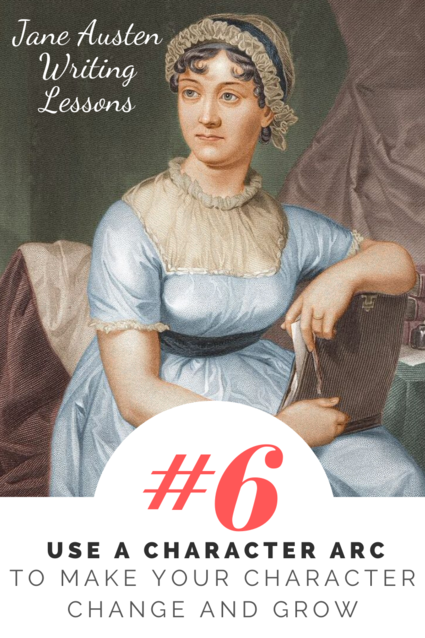
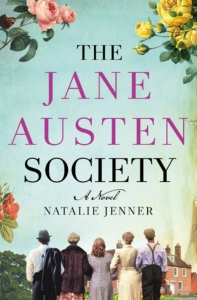
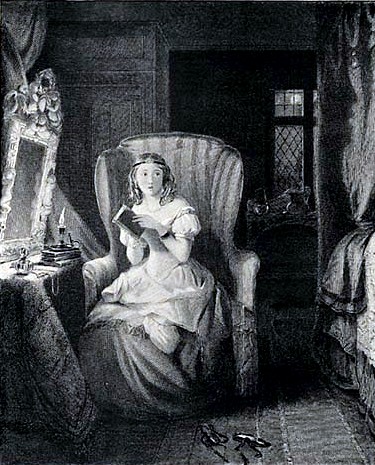

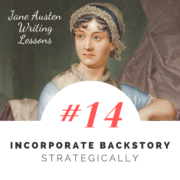
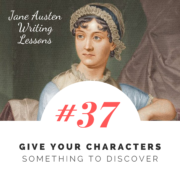
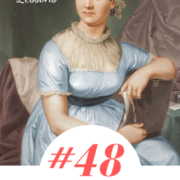
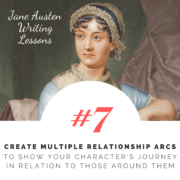
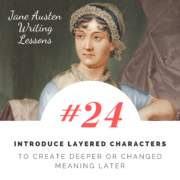



Leave a Reply
Want to join the discussion?Feel free to contribute!